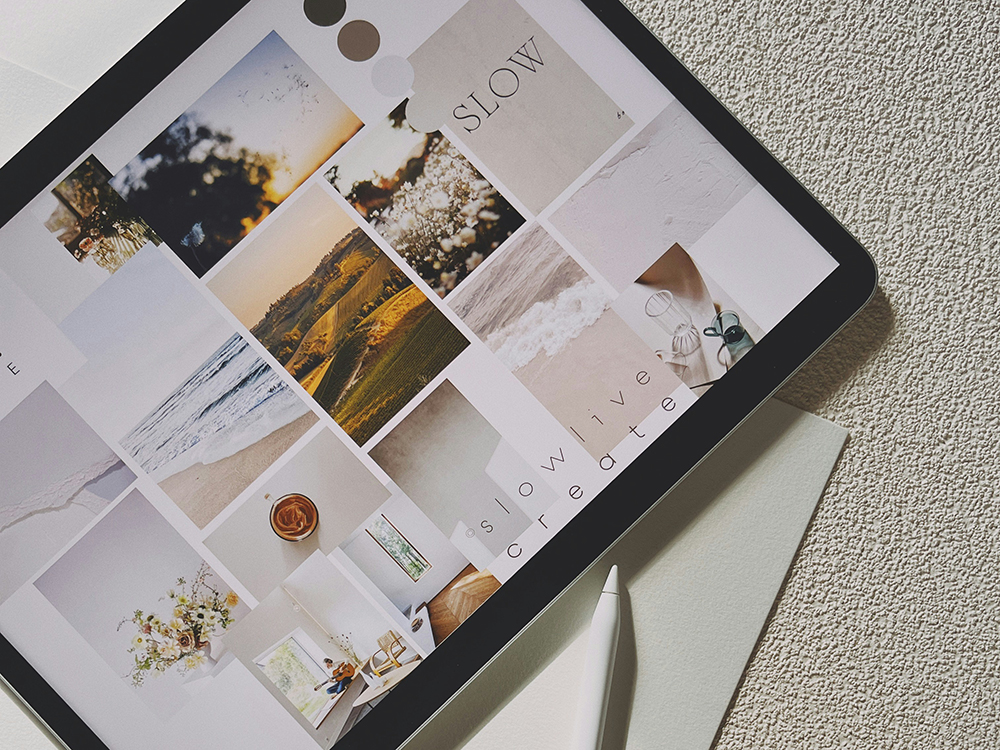1,398 words, 7 minutes read time.
Earlier this year, I led a four-week marketing series at my local public library for small businesses, non-profits, and anyone looking to sharpen their marketing skills. We covered a little bit of everything- branding, creating content with just a smartphone, using AI tools, building out newsletters, and scheduling social media calendars.
I realized these topics are worth sharing beyond just the room we were in. The challenges we talked through and the strategies we explored apply to so many people- especially those juggling multiple roles and trying to grow something meaningful with limited time and resources.
That’s how Marketing Made Simple was born. It’s a new series I’m launching right here on At Home on Hudson, designed to take the overwhelm out of marketing and give you straightforward, doable steps- no fancy tools or big budgets required.
Here are the series topics that we will cover
- Branding (you are here!)
- Creating Content With Your Smartphone
- Using AI
- Newsletter creation
- Scheduling Your Social Media Posts
Why am I qualified to talk about this?
I’ve been a photographer since 2011, which means I’ve spent over a decade telling visual stories and understanding what captures people’s attention. Beyond the camera, I’ve worked behind the scenes managing social media and creating content for eight small businesses or non-profits. That hands-on experience, such as planning posts, building engagement (sometimes even pages from scratch), and understanding what resonates with different audiences, has given me a solid grasp of practical, real-world marketing. I know what it’s like to build a brand from the ground up and how to connect with people in a way that’s both strategic and genuine.

Branding
Let’s talk about branding. Whether you’re running a business, managing a nonprofit, or simply trying to show up better online, this one is key. This is such a buzzword in this day and age. So let’s talk about it.
What Even Is a Brand?
Here’s the thing: a brand is so much more than just a logo. It’s the vibe people get when they land on your Instagram, see your flyer, or scroll past one of your posts. It’s the color palette. The fonts you use. The verbiage.
Ask yourself:
- What do you want people to feel when they see your content?
- What do you want them to remember?
- Would someone recognize your stuff even if your name wasn’t attached?
That’s your brand at work.
Branding Basics: Creating Visuals
But what really is the difference between logos vs. branding?
Logos…
- need to be legible, scalable, and versatile. Too much detail will be lost when scaling down on merchandise.
- are not meant to tell what your business is, but rather, creating a unique mark that captures the spirit of your brand. Think big names like Nike, Amazon, and Target. They have marks that are recognizable enough that you don’t need their business name.
- An example- photographers do not need a camera in their logo, nor do hairdressers need scissors. That is not going to set you apart from the industry when everyone has that. You will blend in with the masses.
Whereas Branding is…
- more than a logo. It is the perception that others have of you.
- Elements include: logos, mission, tone, fonts, audience goals, visuals, and consistency.
- Branding packages have: Primary Logo, Secondary Logo, Logo Mark (typically meant for profile pics on social media), a pattern, and color palettes
We looked at some well-known brands (and even some local ones!) to see what makes them memorable. Spoiler alert: it’s usually consistency, not complexity.
Example of Branding in Action
Here is a fictional business I created for my class to show as an example.
Brand Name: Monroe & Main Mercantile
Tagline: “Goods for Everyday Living”
Concept: A modern twist on the old general store. We sell pantry staples, local crafts, housewares, and
have a small café/soda fountain inside. Located on the corner of Monroe Avenue and Main St. in South Georgia

Mission Statement
At Monroe & Main Mercantile, we believe in the beauty of simple things done well. Rooted in community
and tradition, our mission is to provide thoughtfully curated goods that serve everyday needs with a touch of charm. Whether it’s a bag of flour, a locally made candle, or a bottle of old-fashioned soda, every item on our shelves is chosen with care to support local makers and bring our neighbors closer together.
Audience
The typical customer of Monroe & Main Mercantile is a community-minded individual, often female, aged
28–65, living in a small town or rural area. They value tradition, simplicity, and quality, preferring to shop
local and support small businesses over big-box chains. Many are homemakers, crafters, or DIY
enthusiasts who enjoy creating a warm, welcoming space for their families. They’re drawn to nostalgic,
well-made goods and appreciate the story behind what they buy. Loyal and relationship-driven, they seek meaningful connections with the shops they frequent and enjoy shopping in-person at places that feel like home.
Branding Basics: Know Your Audience
If you’re trying to talk to everyone… you’re probably not connecting with anyone. One of the most important parts of branding is getting clear on your target audience.
Ask yourself:
- Who are they?
- What do they care about?
- What kinds of content do they like (funny memes? polished photos? helpful tips?)
These questions are so unique to your business and your intentions. Once you figure that out, you can plan how to target them specifically. It will help you create your branding voice.
Branding Basics: Find Your Brand Voice (You Already Have One!)

Who are you talking to and how are you saying it?
Ever posted something and thought, “Ugh, that doesn’t sound like me”? That’s a sign you haven’t locked in your brand voice yet.
Your voice could be:
- Friendly and casual
- Educational and calm
- Sassy and bold
- Warm and storytelling-driven
For example, when it comes to running social media for a local festival we have, the branding voice I have established is quirky, fun, and friendly. Our annual festival celebrates a weird insect and we definitely lean in very hard to that while also reminding our audience that we are a fun event! Sometimes we use funny Gifs in the comments, a little in on the joke tone about our craziness, and just make sure we bring the happy and entertainment.
Branding Basics: Color Palettes and Typography
Lastly, we dipped our toes into visual branding. Don’t worry- you don’t need to be a designer. I created a Color Palette Builder Worksheet to explore a few colors and font styles that feel like your brand.
Here are a few tips you can use right now as a starting off point:
(Free tools like Canva and Coolors.co are lifesavers here, especially for determining colors hex codes and furthering find colors that contrast well for accessibility reasons.)
- Find images that inspire you and create a collage in Canva.
- Pick 2–3 brand colors from that inspo board and build your color palette from there. I recommend one dark accent color, one light accent color, and one dark green/blue/black/brown color for the typeface. No more than 4-5 colors is best.
- Once your color palette is created, make sure your marketing materials, logos, and website use these colors as much as possible.
You can then move onto font selection (serif, non-serif, script, bold, etc.) and creating content that has consistency in coloring.
Branding Basics: Homework

Here’s what I’d challenge you to do:
- Describe your audience (age, interests, what they care about)
- Pick 3 adjectives to describe your brand tone (fun? trustworthy? bold?)
- Choose your color palette (Canva and Coolors can help!)
- Create a brand suite yourself or reach out to a creative in graphic design and work with them to create one!
- Write one example post (caption + image idea) that reflects all of the above
Bonus: scroll through Instagram or Facebook and save 3 accounts you admire. Ask yourself—what makes their branding strong?
Thanks for reading! If you found this helpful, feel free to save it for later or share it with a friend.
📌 Pin the image below to keep this post handy!


